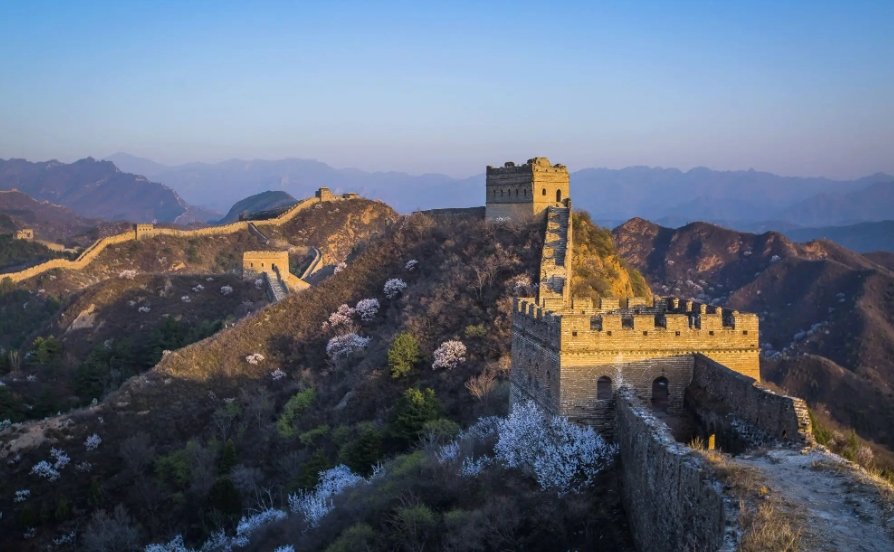
Hiking the Great Wall: How Much Does it Cost?
The Great Wall of China, a UNESCO World Heritage site and one of the New7Wonders of the World, is a bucket-list destination for many. But how much does it actually cost to hike this iconic structure? The answer, like the Wall itself, is vast and depends on your preferred travel style and budget.
Let's break down the cost of hiking the Great Wall based on two main approaches:
1. Joining a Group Tour:
This is arguably the most convenient option, especially for first-time visitors or those short on time. Numerous travel agencies offer daily group tours to various sections of the Wall, each with varying inclusions and price points.
- Average Cost: A typical one-day Great Wall tour from Beijing can cost between CNY 500 - 1,000 (USD 75 - 150) per person.
- Inclusions: This usually covers transportation to and from your hotel in Beijing, entrance fees to the chosen section of the Wall (e.g., Badaling, Mutianyu, Juyongguan), and often includes a guide and lunch.
- Factors Affecting Price:
- Wall Section: Popular and restored sections like Badaling tend to be pricier than lesser-known or unrestored sections.
- Tour Operator: Reputable, established agencies might charge more than smaller, local operators.
- Group Size: Smaller, private group tours will cost significantly more than larger group tours.
- Additional Inclusions: Some tours offer extras like cable car rides, toboggan rides, or visits to other attractions (e.g., Ming Tombs), impacting the overall price.
2. Arranging a Self-Guided Tour:
For independent travelers seeking flexibility and potentially lower costs, arranging a self-guided tour is possible.
- Estimated Cost: Costs for a self-guided tour are more variable, but expect to spend around CNY 200 - 500 (USD 30 - 75) per person.
- Breakdown of Expenses:
- Transportation: Round-trip public transportation from Beijing to the Wall can cost between CNY 20 - 100 (USD 3 - 15) depending on the chosen section and mode of transport (bus, train, taxi).
- Entrance Fees: Ticket prices vary depending on the section and season, ranging from CNY 30 - 65 (USD 4 - 10) per person.
- Food & Drinks: Budget around CNY 50 - 100 (USD 7 - 15) for meals and refreshments unless you bring your own.
- Advantages:
- Flexibility: Set your own pace, explore at your leisure, and avoid the crowds by visiting less-frequented sections.
- Cost Savings: Potentially cheaper than organized tours, especially for budget-conscious travelers.
- Considerations:
- Logistical Planning: Requires more research and planning, including figuring out transportation, purchasing tickets, and navigating the area.
- Language Barrier: Navigating transportation and communicating with locals might be challenging for non-Mandarin speakers.
Tips for Saving Money:
- Visit during the off-season: Avoid peak seasons (summer holidays, national holidays) for lower prices and fewer crowds.
- Consider less popular sections: Explore lesser-known sections like Jinshanling, Simatai, or Gubeikou for a more rugged and authentic experience at a lower cost.
- Pack your own lunch and snacks: Food and drinks tend to be pricier at tourist sites.
Ultimately, the cost of hiking the Great Wall depends on your priorities and travel style. While joining a group tour offers convenience, self-guided tours allow for flexibility and potential cost savings. No matter your budget, experiencing this awe-inspiring structure is an unforgettable adventure.
FAQs:
1. What is the cheapest way to see the Great Wall of China?
Taking a public bus to a less popular section of the Wall, packing your own food, and exploring independently is generally the cheapest way to experience this landmark.
2. Is it worth visiting the Great Wall of China with a tour group?
Tour groups offer convenience, especially for those with limited time or wanting a hassle-free experience. They handle logistics, provide transportation, and often include a guide who can offer historical context.
3. Which section of the Great Wall is best for hiking?
The best section depends on your fitness level and preferences. Mutianyu offers a good balance of restoration and challenging hikes, while Jinshanling is known for its stunning scenery and more demanding trails. Badaling is the most restored and accessible section, making it suitable for families and those with mobility limitations.
note: This return of all, without the author's permission, may not be reproduced